Train in the Gi or No-gi?
Train in the Gi or No-gi?
Traditional bjj is taught in the gi and has since branched off into no-gi submission wrestling, bjj for mixed martial arts and training in the kimono.
read also: The 5 Expressions of Brazilian Jiu-Jitsu
Why do one or the other?
Which one is “the best”?
Why stick to only one flavour of jiu-jitsu?
Should you do all three to ensure a complete bjj game?
There are two main considerations:
1) What is your primary area of interest? Do you like to compete in one type of competition over another?
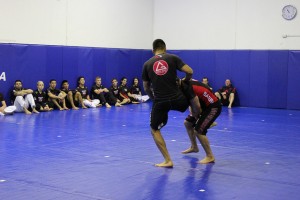 Most grappling competitions feature both gi and no-gi divisions and then it makes sense to train without the kimono as well.
Most grappling competitions feature both gi and no-gi divisions and then it makes sense to train without the kimono as well.
If you are an aspiring mma fighter, then you must also devote time to training bjj with strikes as a consideration in all of your positions.
If you just want to learn the art and sport and someday hope to achieve your blackbelt, then training in the kimono may be the best way for you to go.
2) How much time do you have? What is the best level of training available to you?
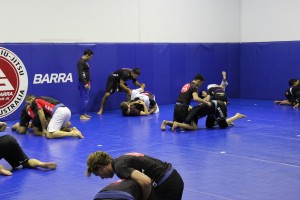 Some other more practical considerations come into play when deciding what to train.
Some other more practical considerations come into play when deciding what to train.
Realistically, how does your bjj training fit into the rest of your life?
If twice or three times a week is what your schedule allows, then you must decide where to allocate your finite training times.
If you are located in a smaller population centre where there are not an abundance of training options, it makes most sense to find the highest level of grappling instruction available.
If you can not find an academy with high level of instruction, training for a while in judo or wrestling with mma fighters will expose you to the highest level of technique.
Now that we have considered these points lets consider a few about the nature of training in the 3 different spheres of jiu-jitsu:
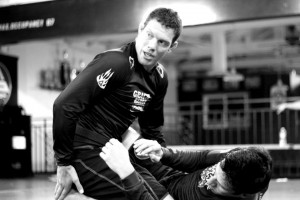 1) Mixed martial arts – Training seriously in mma is not for everyone. Not only do you train your bjj for mma, but additional training in wrestling takedowns and boxing / muay thai is essential.
1) Mixed martial arts – Training seriously in mma is not for everyone. Not only do you train your bjj for mma, but additional training in wrestling takedowns and boxing / muay thai is essential.
Most mma practitioners are highly conditioned athletes with a serious commitment to training. You have to ask yourself if that is what you are willing to sign up for?
The benefits of training bjj for mma are that you develop a high degree of confidence in your ability to use your bjj against another aggressive, trained opponent in a high intensity environment.
A smaller number of techniques than the kimono training, but an emphasis on defending strikes while controlling and looking for submissions is as real as bjj gets!
2) Submission grappling or no-gi
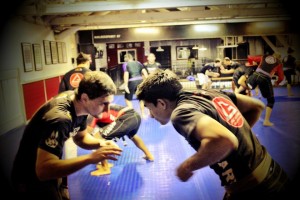 All bjj students can benefit from training without the kimono at times.
All bjj students can benefit from training without the kimono at times.
The student is forced to learn new grips since the collar, sleeves and pant legs are no longer available. That awesome spider guard is not so awesome without the sleeves to control!
You can adapt your bjj to use non-kimono grips like under and over hooks, collar ties and wrist controls. You will gain an new understanding of the “handles” on the human body and how to control an opponent.
The no-gi style of jiu-jitsu tends to be a faster, more scrambling based game and those more athletic and younger practitioners tend to find advantage in that.
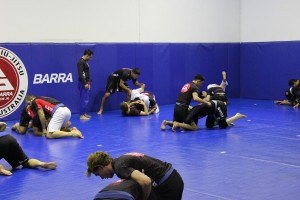 Without the kimono, collar chokes are eliminated and a considerable part of the arsenal of a bjj fighter disappears. The student now must concentrate on guillotines, Darce, head and arm chokes. All of which provide variety in your learning and can also be used when you put the kimono on.
Without the kimono, collar chokes are eliminated and a considerable part of the arsenal of a bjj fighter disappears. The student now must concentrate on guillotines, Darce, head and arm chokes. All of which provide variety in your learning and can also be used when you put the kimono on.
In my academy, when the hotter weather comes, it can be a great relief to take off the kimono and train in the cooler rash guards and board shorts.
3) Bjj with the kimono
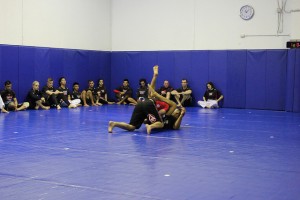 Arguably the most technical of the three expressions of jiu-jitsu, this is the way bjj is taught at the best academies in the Mecca of bjj, Brazil.
Arguably the most technical of the three expressions of jiu-jitsu, this is the way bjj is taught at the best academies in the Mecca of bjj, Brazil.
The kimono affords the greatest number of techniques – especially when it comes to the various guard games and sweeps.
The student who studies bjj in the kimono will be exposed to new techniques and variations even after training for several years. The pool of knowledge is bottomless and that is exciting for someone who sees bjj study as a life long pursuit!
With so many ways for the opponent to grip the kimono and control and attack you, your defences and escapes must be of the highest technical level!
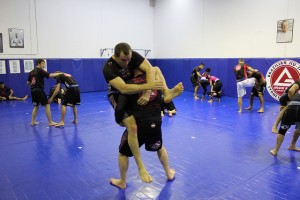 One must be cautious however, to understand that some of these kimono grips will disappear without the kimono and your jiu-jitsu can be exposed as lacking in a different situation.
One must be cautious however, to understand that some of these kimono grips will disappear without the kimono and your jiu-jitsu can be exposed as lacking in a different situation.
It is also important to note that if the student wishes to graduate in the bjj belt rankings, these graduations are based on training in the kimono. You might be a pro mma fighter with submission victories to your credit, but if you don’t train in the kimono, you may never attain that coveted black belt.
Which do you prefer: bjj in the gi or no-gi?
Credits: Mark Mullen
Gracie Barra Black belt based in Taipei, Taiwan
Twitter: @MarkMullenBJJ

